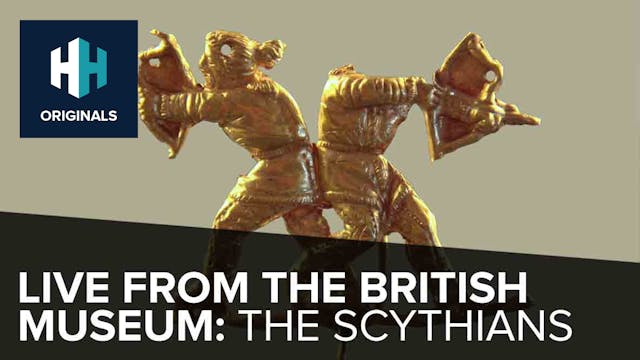Tristan Hughes explores the destruction of Pompeii, using extraordinary eyewitness testimony and the revelations of archaeology to understand what really happened here nearly 2000 years ago.
In 79 AD, one of the greatest natural disasters in Roman history occurred in southern Italy, when Mount Vesuvius erupted and obliterated the surrounding area, including the prosperous port of Pompeii. The thriving town was first engulfed by a relentless hailstorm of pumice rock before being overwhelmed by deadly volcanic heat waves, called pyroclastic flows and surges. Nothing living survived. By the time the eruption came to an end, Pompeii had been buried in six metres of volcanic debris.
This great disaster has immortalised Pompeii’s story, preserving so much of its archaeology, and giving us remarkable insight into the town's final hours - men, women and children caught up in the unfolding disaster.
But these incredible material remains are not the only evidence of what happened. In addition, we also have an extraordinary piece of surviving literature. An eyewitness account, written by a prolific Roman letter writer called Pliny the Younger.
Pliny’s letters - rich in detail and emotion - paint a terrifying picture of what people caught up in this ancient apocalypse thought and felt. Beautifully written, his detailed account provides poignant and humanising colour to the terrifying archaeology that has survived - most infamously Pompeii’s iconic plaster casts of people stuck down during the eruption.
But Pliny’s letters also tell a remarkable story - the heroic adventure of his famous namesake uncle, Pliny the Elder, who sailed towards the volcanic danger during the early stages of the eruption on a daring rescue mission.
In this documentary, Tristan Hughes visits Pompeii to learn more about the terrifying eruption that caused its destruction. Meeting leading experts around the site, he discovers what the archaeology, along with Pliny the Younger’s letters, has revealed about Pompeii’s ultimate fate.
Up Next in Ancient Greece
-
Greatest Discoveries: Lost Lives of P...
The story of Pompeii’s destruction is renowned across the world. In 79 AD, this prosperous Roman town was destroyed by a massive, volcanic eruption. Pompeii became frozen in time, only to be rediscovered c.1500 years later.
Warning: contains very strong language and sexual content.
Vesuvius’ er...
-
Thebes
Athens, Sparta and Corinth are arguably three of the most famous, and most significant, Greek city-states of antiquity. But there is one 'polis' that is often forgotten. A city that rose to prominence during the 4th century BC. That city was Thebes. From fighting with the Persians during the Pers...
-
Live from the British Museum: The Scy...
2,500 years ago groups of formidable warriors roamed the vast open plains of Siberia. Ferocious nomads, they roamed from Southern Russia down into Iran – a whole region that makes up the middle portion of the Silk Roads. Feared, loathed, admired – but over time forgotten… until now. A new major e...




24 Comments